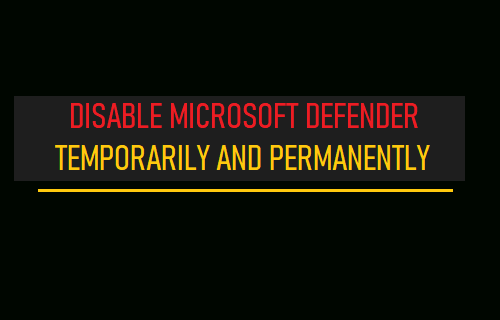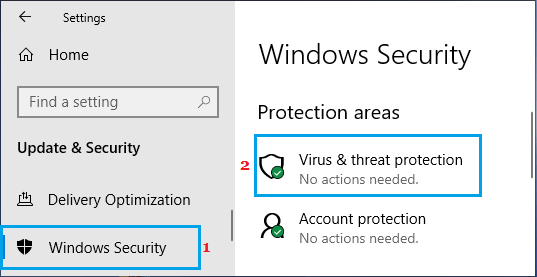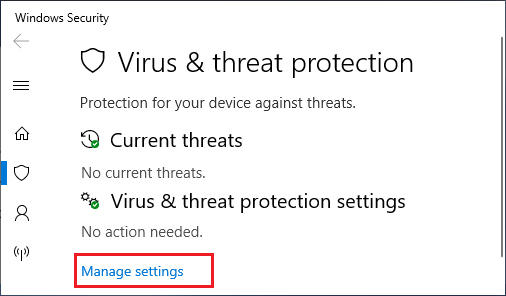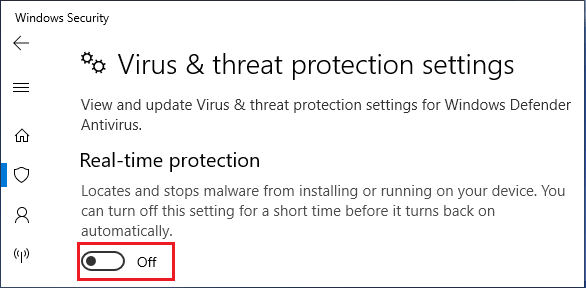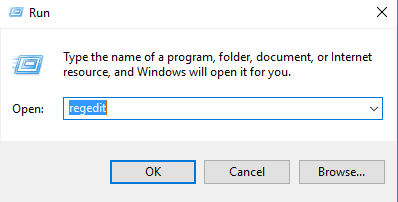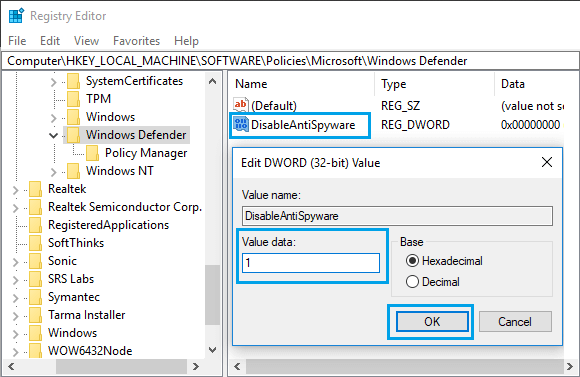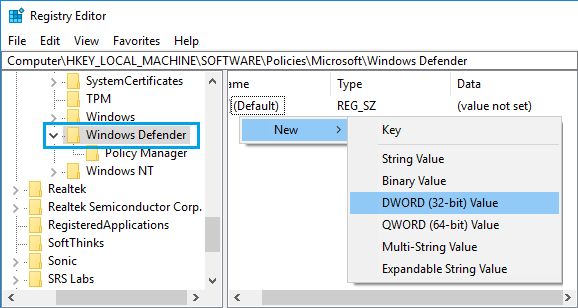Disable Microsoft Defender Antivirus Protection
Windows computers come pre-loaded with Antivirus & Malware protection program known as Microsoft Defender, which is also known as Windows Defender. However, some users have reported the problem of computer running slow, becoming noisy and even getting stuck due to High RAM & CPU Usage by Microsoft Defender. Hence, we are providing below the steps to Turn OFF Microsoft Defender, both temporary and permanently.
1. Temporarily Disable Microsoft Defender Real Time Protection
The easiest way to Temporarily Disable Microsoft Defender is by going to Windows Security Settings on your computer. Go to Settings > Update & security > select Windows Security in the left-pane. In the right-pane, click on Virus & threat protection.
On the next screen, click on Manage Settings Link, located under “Virus & threat protection settings”.
On the next screen, turn OFF Real-Time Protection, Cloud Delivered Protection and Automatic Sample Submission.
Note: This method disables Microsoft Defender for a temporary period of time. Your computer will Automatically switch ON Real Time protection after a certain period of time.
2. Permanently Disable Microsoft Defender Using Registry
Note: It is recommended that you create a system restore point or backup registry before making changes to Registry Files on your computer. Right-click on the Start button and click on the Run. In Run Command window, type Regedit and click on OK.
On Registry Editor Screen, navigate to HKEY_LOCAL_MACHINE\SOFTWARE\Policies\Microsoft\Windows Defender. In the right-pane, double-click on DisableAntiSpyware and change its Value Data from 0 to 1.
This will Permanently Disable Microsoft Defender Antivirus protection on your computer. At any time, you can Real Time Protection by Microsoft Defender on your computer by changing Value Data from 1 to 0.
Cannot Find DisableAntiSpyware
If you do not find DWORD named “DisableAntiSpyware”, you will have to create a New DWORD and name the DWORD as “DisableAntiSpyware”. Right-click on an empty area in the right-pane > select New and click on DWORD (32-bit) Value.
Name the new Key as DisableAntiSpyware > Enter 1 in the Value Data field. Note: It is not recommended to permanently disable Microsoft Defender, unless a Third Party Antivirus Program is protecting your computer.
How to Protect Windows Computer From Remote Attacks How to Disable SmartScreen Filter In Windows 10
